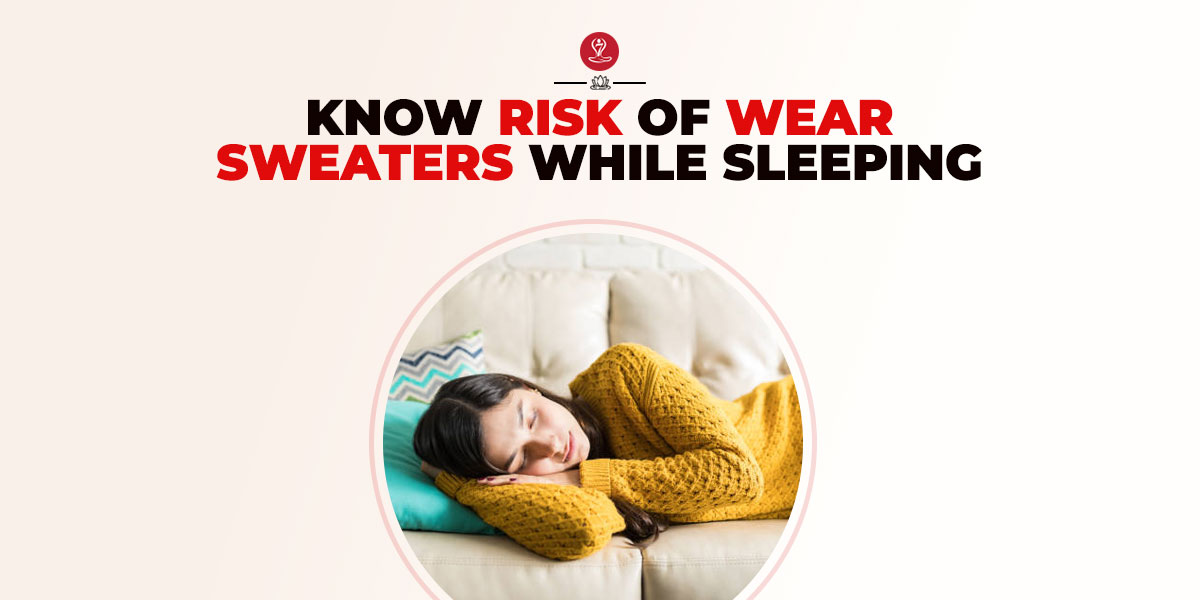Are you wear sweaters while sleeping in winter? Perhaps you have no idea how much harm wearing a sweater while sleeping. This can damage your health in unimaginable ways.
In winters, we try to protect ourselves from the cold by wearing warm woolen clothes to the bed. But sleeping in warm clothes on cold days is not at all good for your health. This could potentially damage your health.
Let us tell you today why one should not sleep wearing woolen clothes at night in winter.
Know risk of wear sweaters while sleeping
In winter, we often go to sleep wearing woolen clothes and sweaters. Of course, it is very comfortable for you and you also feel that you are completely safe from the cold but there is nothing like it. What you are thinking of as a way to get comfortable and warm sleep is actually very harmful to your health. Sleeping wearing a sweater or woolen clothes can have many side effects on your body.
- Wearing a woolen clothes and sweater while sleeping increases the dryness of the skin. Due to this eczema and many other skin-related problems start to occur.
- Movement during sleep increases sweating in the woolen clothes and sweater and can cause a rapid drop in blood pressure, causing sudden panic or restlessness.
- The excessive amount of heat generated in the body while sleeping at night also causes sweating in the genital area, which can cause not only inflammation in the private parts but also various types of infections.
- Who wear sweaters at night will experience an aggravate allergies and cause itching. If your skin is dry, then even the wool filaments will stick to it, become stiff and stretch. This can also lead to rashes, nettle-rashes or patches occur in the skin.
- Often people go to sleep wearing warm clothes as well as socks to warm themselves at night, but According to experts, this should not be done. Because wool has thermal insulation that does not absorb sweat well. This produces bacteria and also blisters. So experts recommend cotton socks instead of woolen socks at night.
- Our bodies naturally regulate temperature during sleep, with core body temperature dropping slightly to promote restorative sleep. Wearing excessively warm clothing can interfere with this natural cooling process, potentially disrupting sleep quality and overall sleep patterns.
- As we have already told you that due to wearing sweater at night, there is a lot of sweat in the body which we do not realize. In addition, our water intake in winters also decreases significantly, which may lead to prone to dehydration in younger kids even in winter.
- Especially people who have a history of cardiac disease should avoid sleeping wearing a sweater. This reduces the circulation of air in the body and can increase the body temperature, which can lead to problems like heart attack, feel heaviness in their chest, breathing issues, other heart problems, and lead to giddiness.
To promote better sleep and overall health during the winter months, consider alternative ways to stay warm without relying solely on woolen clothes or sweaters. This may include using blankets or bedding made from breathable, moisture-wicking materials, adjusting room temperature or using a humidifier to maintain optimal sleep conditions, and wearing lightweight, comfortable sleepwear that allows for proper ventilation and movement. If you have concerns about your sleep habits or experience persistent discomfort, it’s advisable to consult with a doctor for personalized advice and recommendations.
Conclusion
Let us tell you that wool is a bad conductor of heat. In winter, the blood vessels of the body constrict. The body becomes hot when sleeping wearing woolen clothes. But the body heat is not able to come out, due to which there is restlessness, nervousness, BP problem.


